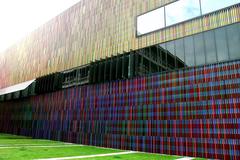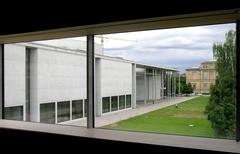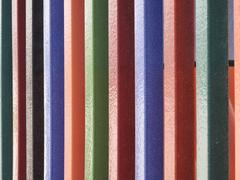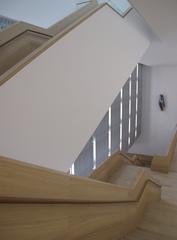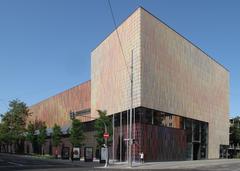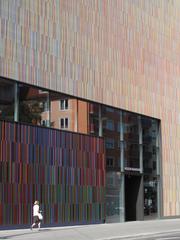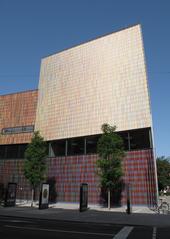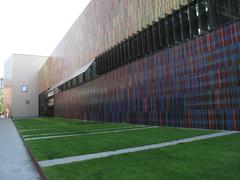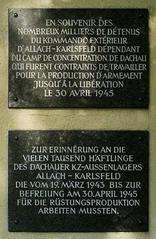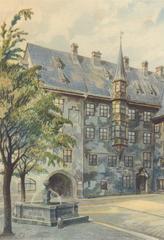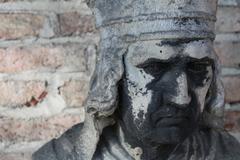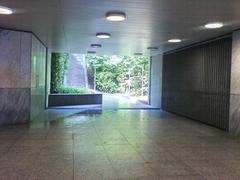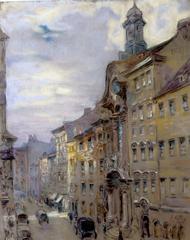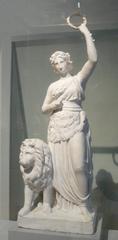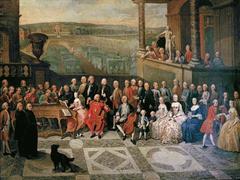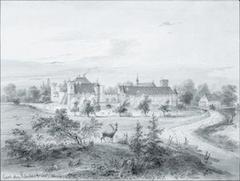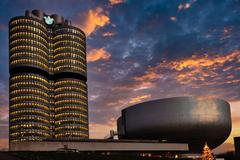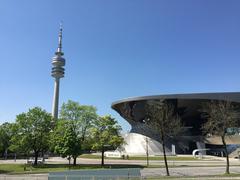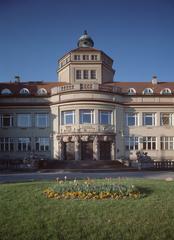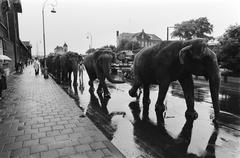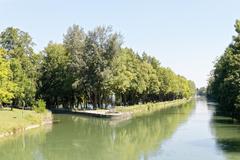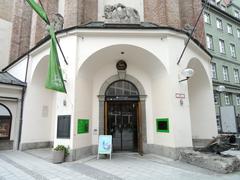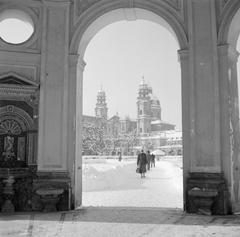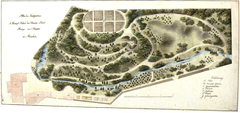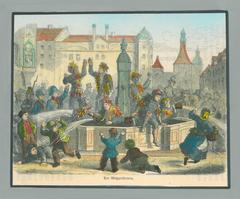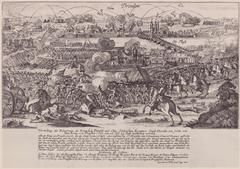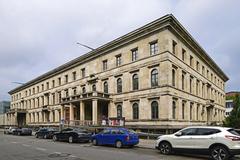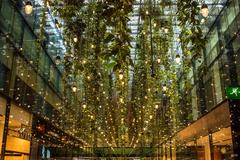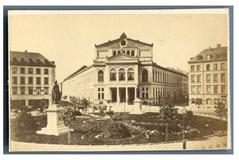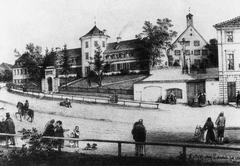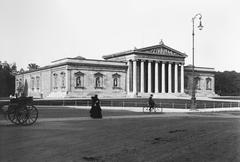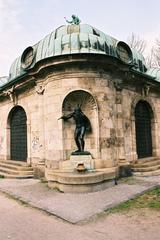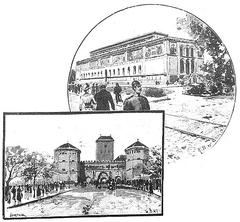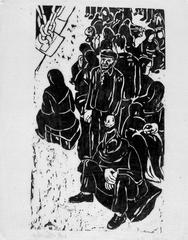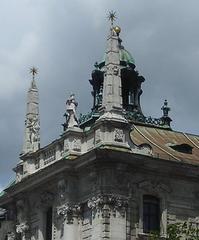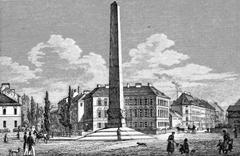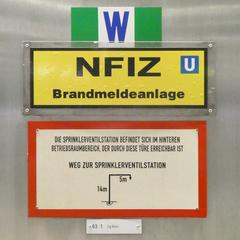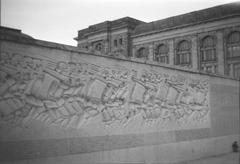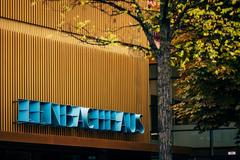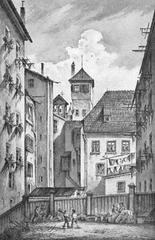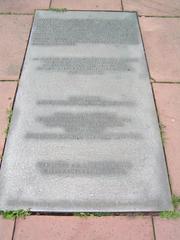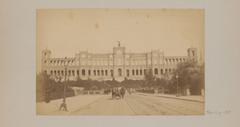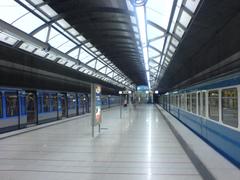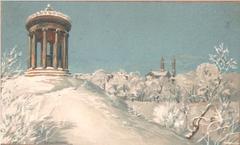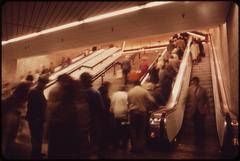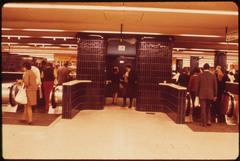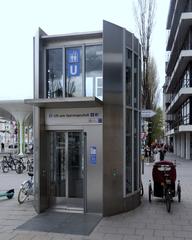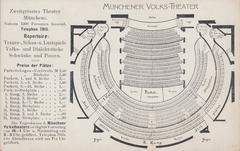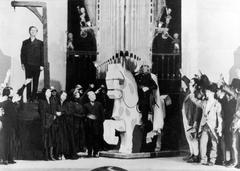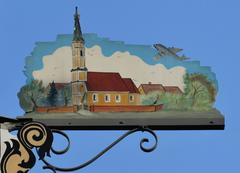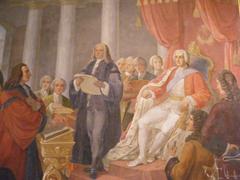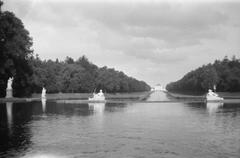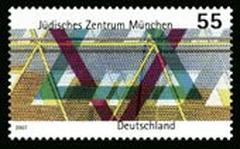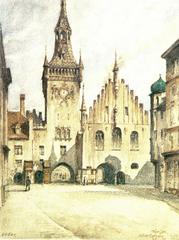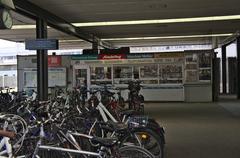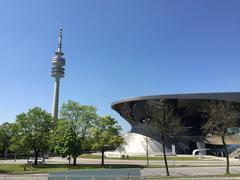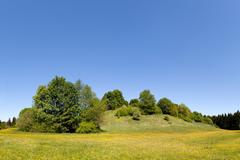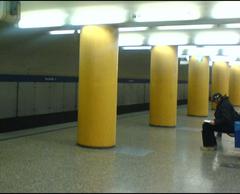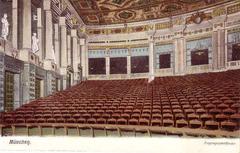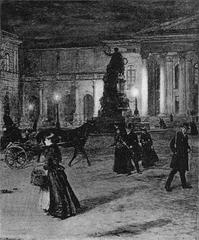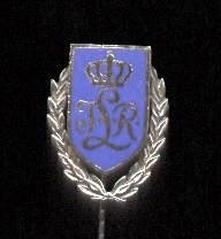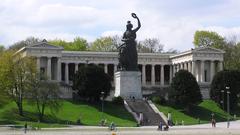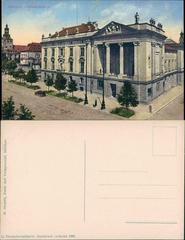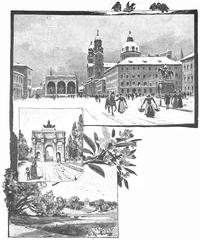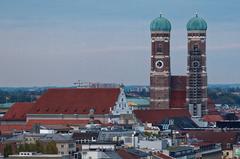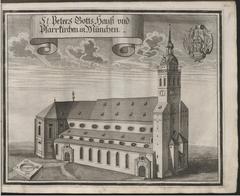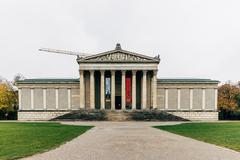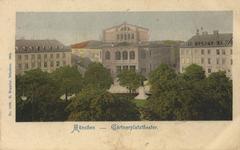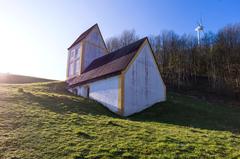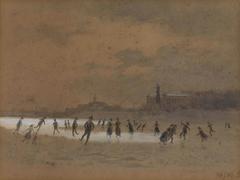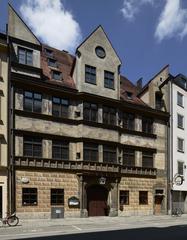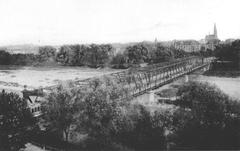
Visiting Hours and Tickets for Museum Brandhorst in Munich
Date: 23/07/2024
Introduction
Museum Brandhorst, nestled in Munich’s vibrant Kunstareal museum quarter, is an indispensable destination for enthusiasts of modern and contemporary art. Officially opened on May 21, 2009, the museum owes its existence to the generous donation from Udo and Anette Brandhorst, whose collection of over 700 works forms the core of the museum’s exhibits (Visiting Museum Brandhorst). The museum’s architecture, designed by the renowned architectural firm Sauerbruch Hutton, is a visual masterpiece. Its colorful facade, made up of 36,000 ceramic rods in 23 different colors, not only captivates visitors but also contributes to the building’s energy efficiency (Plan Your Visit to Museum Brandhorst).
Museum Brandhorst’s collection is a treasure trove of modern and contemporary art, featuring works by iconic artists such as Andy Warhol, Cy Twombly, and Jean-Michel Basquiat. The museum houses the largest collection of Cy Twombly’s works outside of the United States, drawing art enthusiasts from around the globe (Visiting Museum Brandhorst).
Table of Contents
- Introduction
- History and Significance
- The Collection
- Visitor Information
- Visitor Tips
- FAQ
- Conclusion
History and Significance
Origins and Establishment
Museum Brandhorst, located in Munich, Germany, officially opened its doors to the public on May 21, 2009, thanks to the generous donation from Udo and Anette Brandhorst. Their collection, encompassing over 700 works, forms the museum’s core exhibits. The Brandhorsts were passionate art collectors, and their collection spans a wide range of modern and contemporary art. Their donation was not just a gift of art but also a significant cultural contribution to Munich, enhancing the city’s reputation as a hub for art and culture. The museum’s construction was funded by the Bavarian state, with the building designed by Sauerbruch Hutton.
Architectural Significance
Designed by Sauerbruch Hutton, Museum Brandhorst features a colorful facade made up of 36,000 ceramic rods in 23 different colors. The design not only captivates visually but also contributes to the building’s energy efficiency. The rods help to regulate the temperature inside the building, making it an energy-efficient structure. Inside, the museum is designed to provide an optimal viewing experience for visitors. The galleries are spacious and well-lit, with high ceilings and large windows that allow natural light to flood the space. The layout of the museum is intuitive, guiding visitors through the collection in a way that feels natural and engaging.
The Collection
Cy Twombly
One of the most significant highlights of the Museum Brandhorst collection is the extensive works of Cy Twombly. The museum houses over 170 pieces by Twombly, making it one of the most comprehensive collections of his work worldwide. Notable pieces include the monumental “Lepanto” cycle, a series of 12 large canvases created in 2001, and “Quattro Stagioni” (A Painting in Four Parts), which represents the four seasons (Museum Brandhorst).
Andy Warhol
The museum also boasts an impressive collection of works by Andy Warhol, a leading figure in the Pop Art movement. Among the highlights are Warhol’s “Marilyn” series and “Mustard Race Riot” from the “Death and Disaster” series (Museum Brandhorst).
Jean-Michel Basquiat
Jean-Michel Basquiat’s works are another cornerstone of the Museum Brandhorst collection. Basquiat, known for his raw, expressive style and poignant social commentary, is represented by several key pieces, including “Untitled (1981)” (Museum Brandhorst).
Contemporary Photography
The museum’s collection includes significant works of contemporary photography by Andreas Gursky and Wolfgang Tillmans. Gursky’s large-scale photographs, such as “99 Cent II Diptychon,” and Tillmans’ intimate and experimental approach are notable highlights (Museum Brandhorst, Museum Brandhorst).
Gerhard Richter
Gerhard Richter, one of the most influential contemporary artists, is well-represented in the Museum Brandhorst collection. Notable pieces include “Abstract Painting (849-3),” showcasing his innovative use of color and texture (Museum Brandhorst).
Damien Hirst
Damien Hirst, known for his provocative works, is another key figure in the Museum Brandhorst collection. His piece “In This Terrible Moment We Are All Victims of an Environment That Refuses to Acknowledge the Soul” is a striking work featuring his signature use of medical and pharmaceutical imagery (Museum Brandhorst).
Louise Lawler
Louise Lawler’s conceptual art is also a significant part of the museum’s collection. Her work “Pollock and Tureen” captures artworks in various contexts, prompting viewers to consider how art is experienced and valued (Museum Brandhorst).
Mike Kelley
Mike Kelley, known for his multidisciplinary approach, is represented by several important works, including “Day Is Done,” a series of video installations exploring themes of memory, trauma, and cultural identity (Museum Brandhorst).
Kara Walker
Kara Walker’s powerful and provocative works are another highlight of the Museum Brandhorst collection. Her piece “The End of Uncle Tom and the Grand Allegorical Tableau of Eva in Heaven” uses stark black-and-white imagery to confront the brutal realities of slavery and its legacy (Museum Brandhorst).
Visitor Information
Opening Hours
The museum is open from Tuesday to Sunday, from 10:00 AM to 6:00 PM. On Thursdays, the museum extends its hours until 8:00 PM. It is closed on Mondays and certain public holidays. Check the official website for any changes in opening hours.
Admission Fees
The standard admission fee for adults is €7. Reduced tickets are available for €5 for students, seniors, and other eligible groups. Children and teenagers under the age of 18 can enter for free. Guided tours and special exhibitions may have different pricing. For the latest information, visit the official website.
Accessibility
The museum is fully accessible to visitors with disabilities, including wheelchair access and accessible restrooms.
Travel Tips
Museum Brandhorst is located at Theresienstraße 35a, 80333 Munich, Germany. It is easily accessible by public transportation. Visitors can take the U-Bahn lines U3 or U6 to the Universität station or tram lines 27 and 28 to Pinakotheken.
Nearby Attractions
Located in the Kunstareal museum quarter, Museum Brandhorst is surrounded by other notable institutions such as the Alte Pinakothek, Neue Pinakothek, and the Pinakothek der Moderne.
Visitor Tips
- Plan Ahead: Check the museum’s website for current exhibitions and events.
- Guided Tours: Take advantage of guided tours for deeper insights into the collection.
- Museum Café: Enjoy a coffee or snack at the museum café.
- Museum Shop: Visit the museum shop for unique souvenirs, art books, and prints.
FAQ
Q: Can I take photos inside the museum?
A: Yes, but please adhere to the museum’s photography policies.
Q: Are there guided tours available?
A: Yes, guided tours are available in multiple languages.
Q: Is the museum accessible for people with disabilities?
A: Yes, the museum is fully accessible.
Q: How can I find out about special events and exhibitions?
A: Check the official website for the latest information.
Conclusion
Museum Brandhorst is a highlight of Munich’s cultural scene, offering visitors a unique opportunity to engage with modern and contemporary art. Whether you are an art aficionado or a casual visitor, the museum provides an enriching experience. Plan your visit today and immerse yourself in the vibrant world of art.
References
- Visiting Museum Brandhorst - Hours, Tickets, and Highlights of Munich’s Contemporary Art Gem, 2024, Museum Brandhorst (Visiting Museum Brandhorst)
- Plan Your Visit to Museum Brandhorst in Munich - Hours, Tickets, and Tips, 2024, Museum Brandhorst (Plan Your Visit to Museum Brandhorst)
- Visiting Museum Brandhorst - Highlights, Tickets, and Tips, 2024, Museum Brandhorst (Museum Brandhorst)
